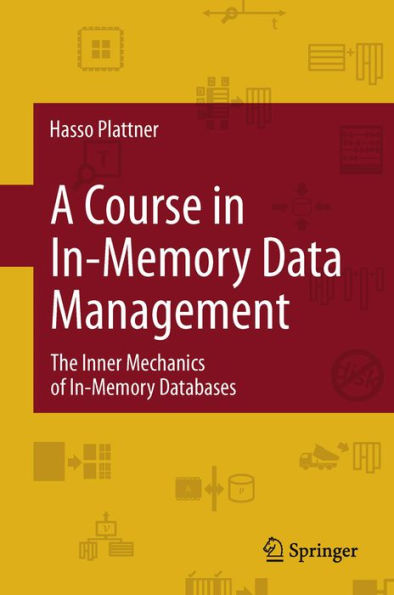Recent achievements in hardware and software development, such as multi-core CPUs and DRAM capacities of multiple terabytes per server, enabled the introduction of a revolutionary technology: in-memory data management. This technology supports the flexible and extremely fast analysis of massive amounts of enterprise data. Professor Hasso Plattner and his research group at the Hasso Plattner Institute in Potsdam, Germany, have been investigating and teaching the corresponding concepts and their adoption in the software industry for years.
This book is based on the first online course on the openHPI e-learning platform, which was launched in autumn 2012 with more than 13,000 learners. The book is designed for students of computer science, software engineering, and IT related subjects. However, it addresses business experts, decision makers, software developers, technology experts, and IT analysts alike. Plattner and his group focus on exploring the inner mechanics of a column-oriented dictionary-encoded in-memory database. Covered topics include - amongst others - physical data storage and access, basic database operators, compression mechanisms, and parallel join algorithms. Beyond that, implications for future enterprise applications and their development are discussed. Readers are lead to understand the radical differences and advantages of the new technology over traditional row-oriented disk-based databases.
Recent achievements in hardware and software development, such as multi-core CPUs and DRAM capacities of multiple terabytes per server, enabled the introduction of a revolutionary technology: in-memory data management. This technology supports the flexible and extremely fast analysis of massive amounts of enterprise data. Professor Hasso Plattner and his research group at the Hasso Plattner Institute in Potsdam, Germany, have been investigating and teaching the corresponding concepts and their adoption in the software industry for years.
This book is based on the first online course on the openHPI e-learning platform, which was launched in autumn 2012 with more than 13,000 learners. The book is designed for students of computer science, software engineering, and IT related subjects. However, it addresses business experts, decision makers, software developers, technology experts, and IT analysts alike. Plattner and his group focus on exploring the inner mechanics of a column-oriented dictionary-encoded in-memory database. Covered topics include - amongst others - physical data storage and access, basic database operators, compression mechanisms, and parallel join algorithms. Beyond that, implications for future enterprise applications and their development are discussed. Readers are lead to understand the radical differences and advantages of the new technology over traditional row-oriented disk-based databases.

A Course in In-Memory Data Management: The Inner Mechanics of In-Memory Databases

A Course in In-Memory Data Management: The Inner Mechanics of In-Memory Databases
Related collections and offers

Product Details
| ISBN-13: | 9783642365249 |
|---|---|
| Publisher: | Springer-Verlag New York, LLC |
| Publication date: | 04/22/2013 |
| Sold by: | Barnes & Noble |
| Format: | eBook |
| File size: | 3 MB |
